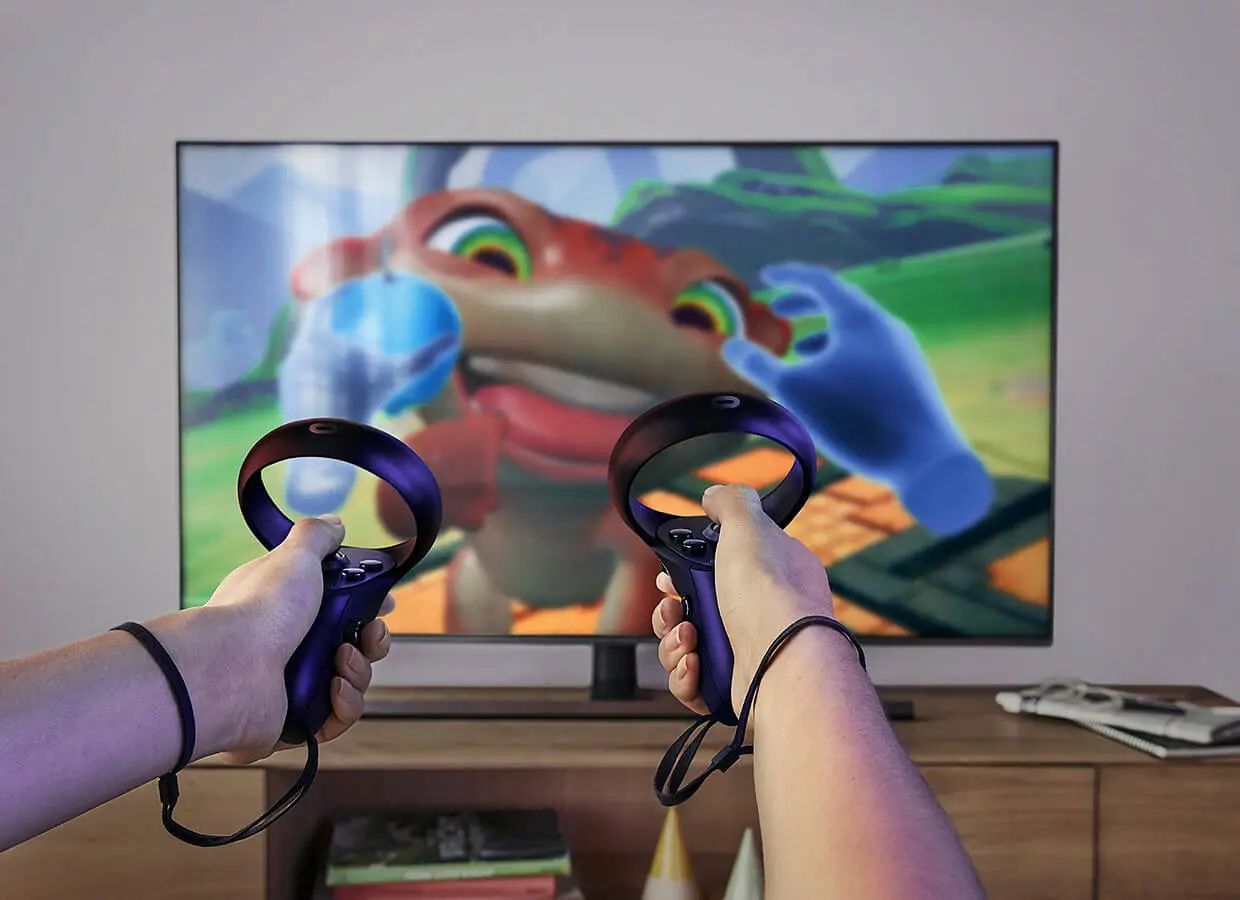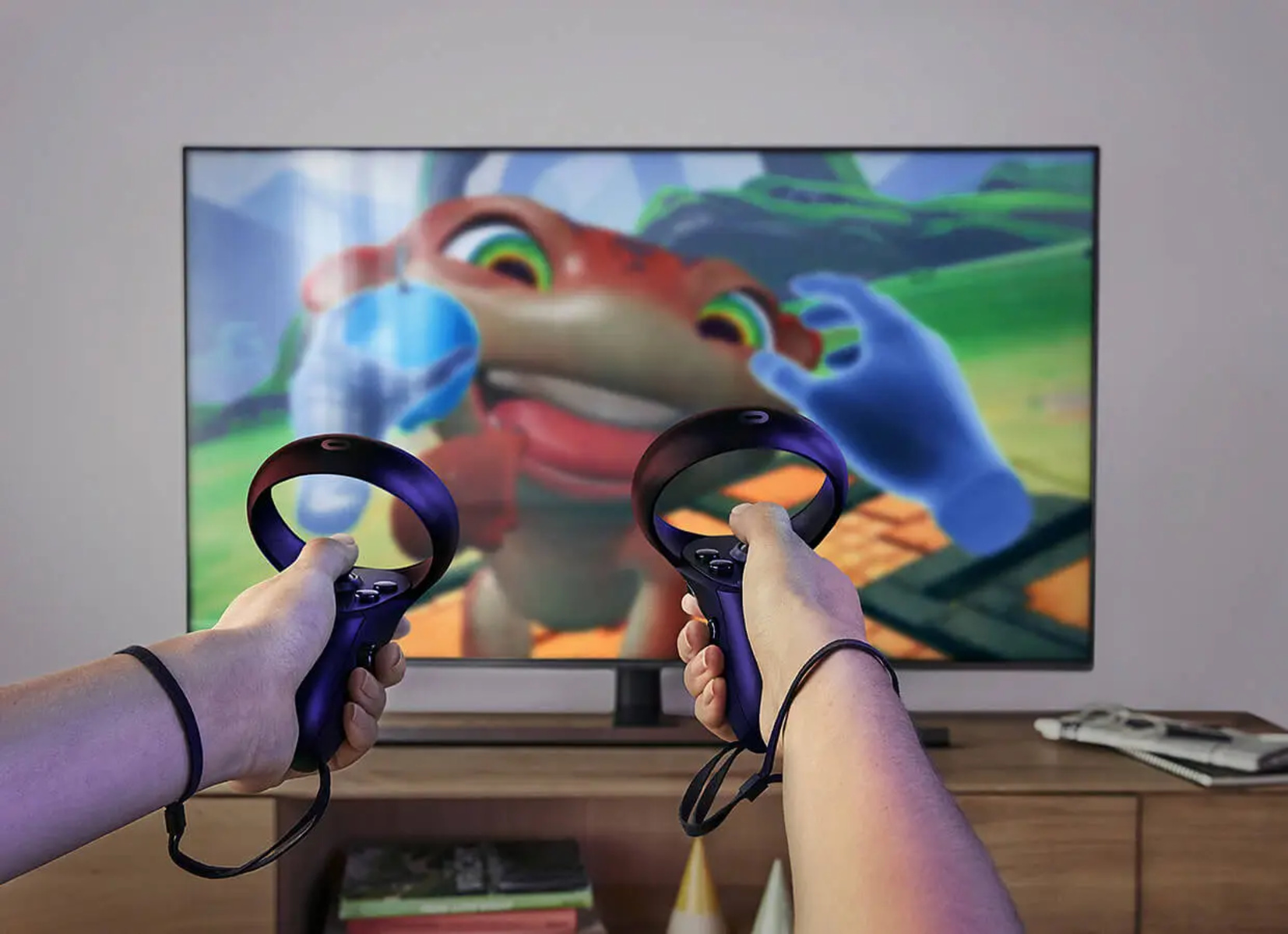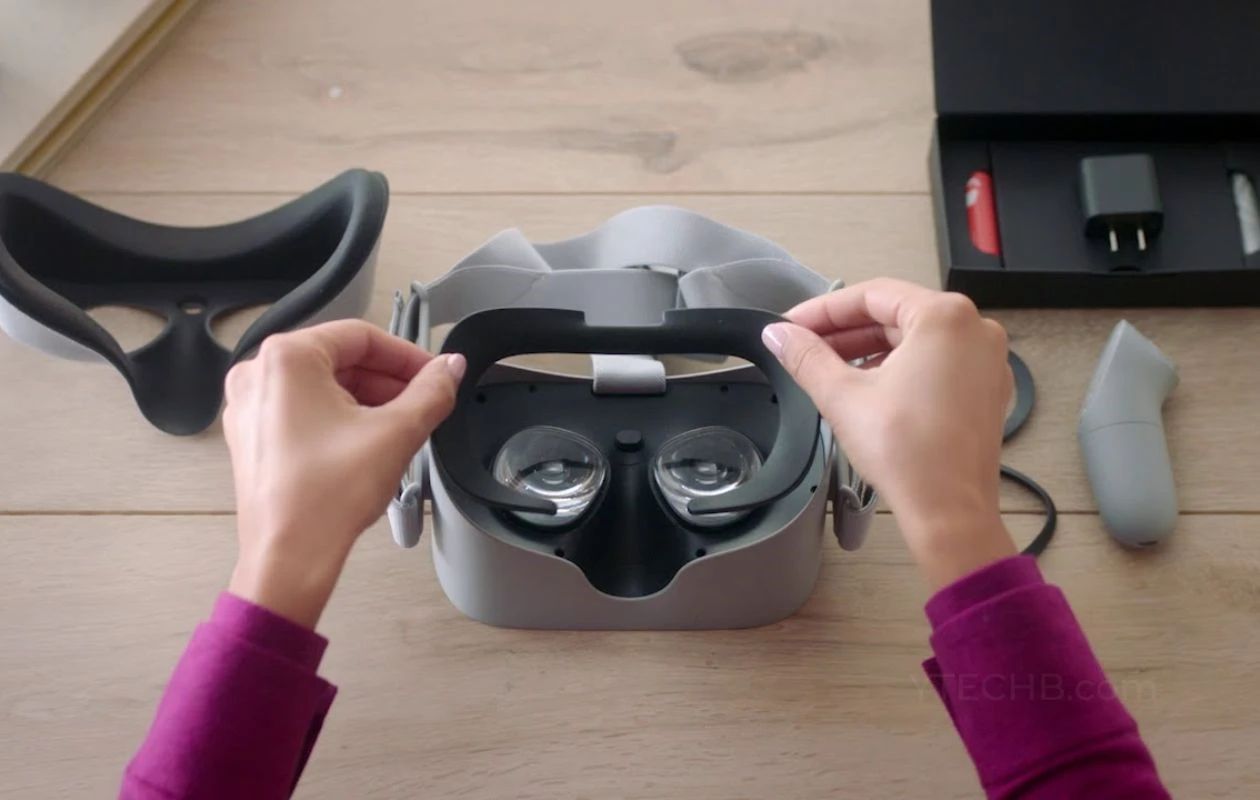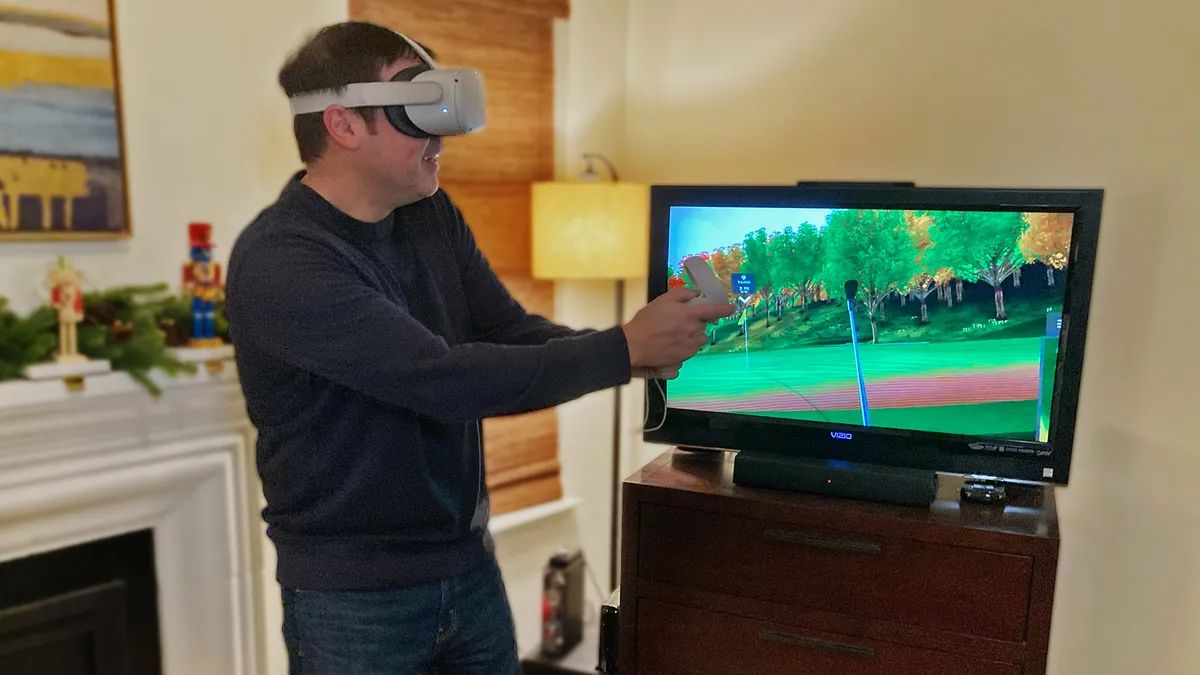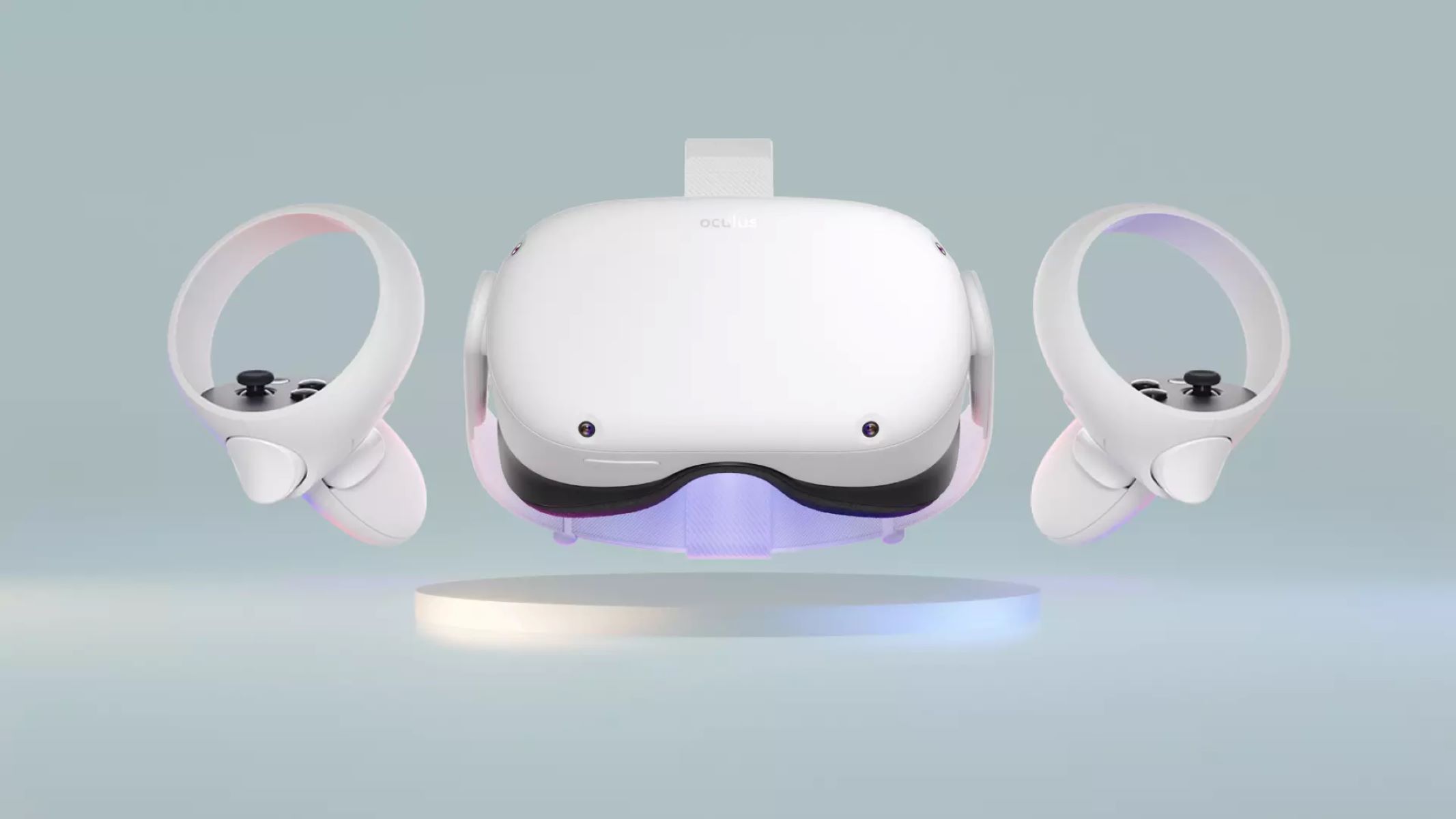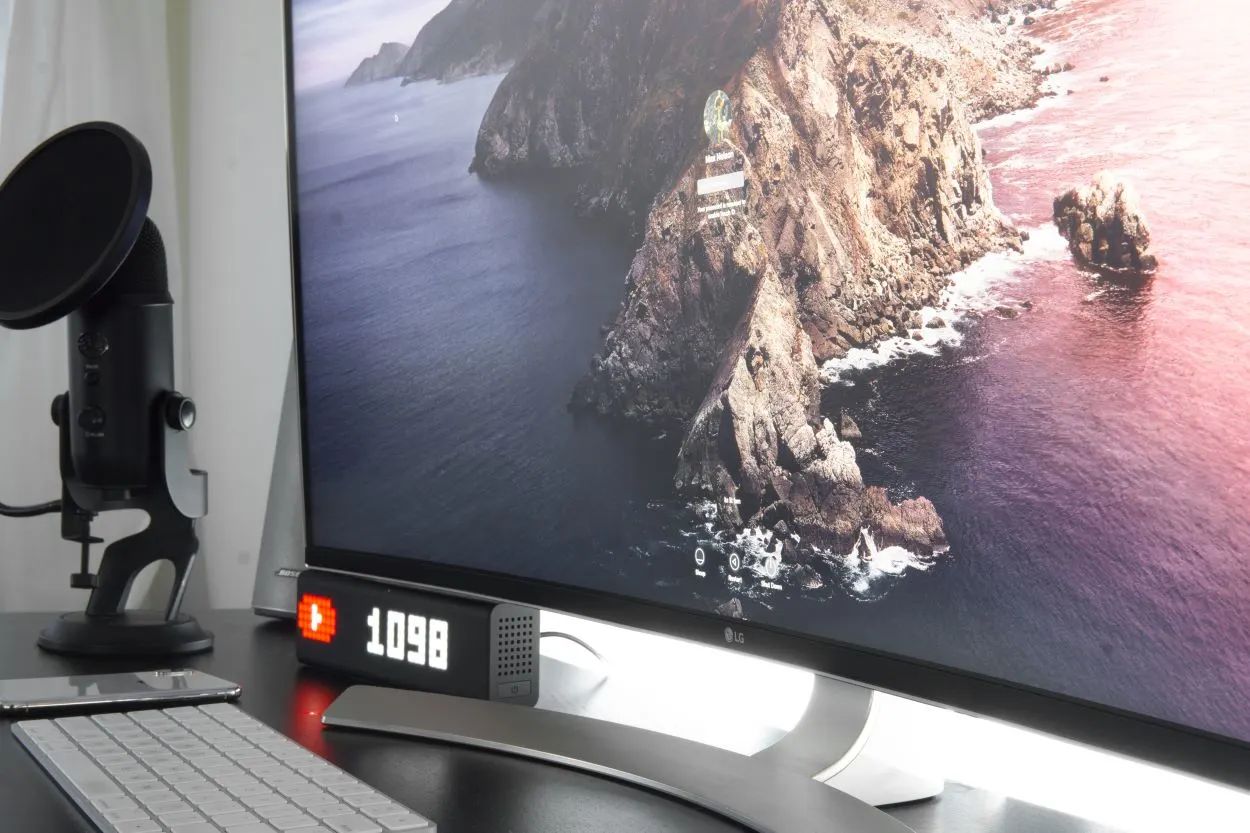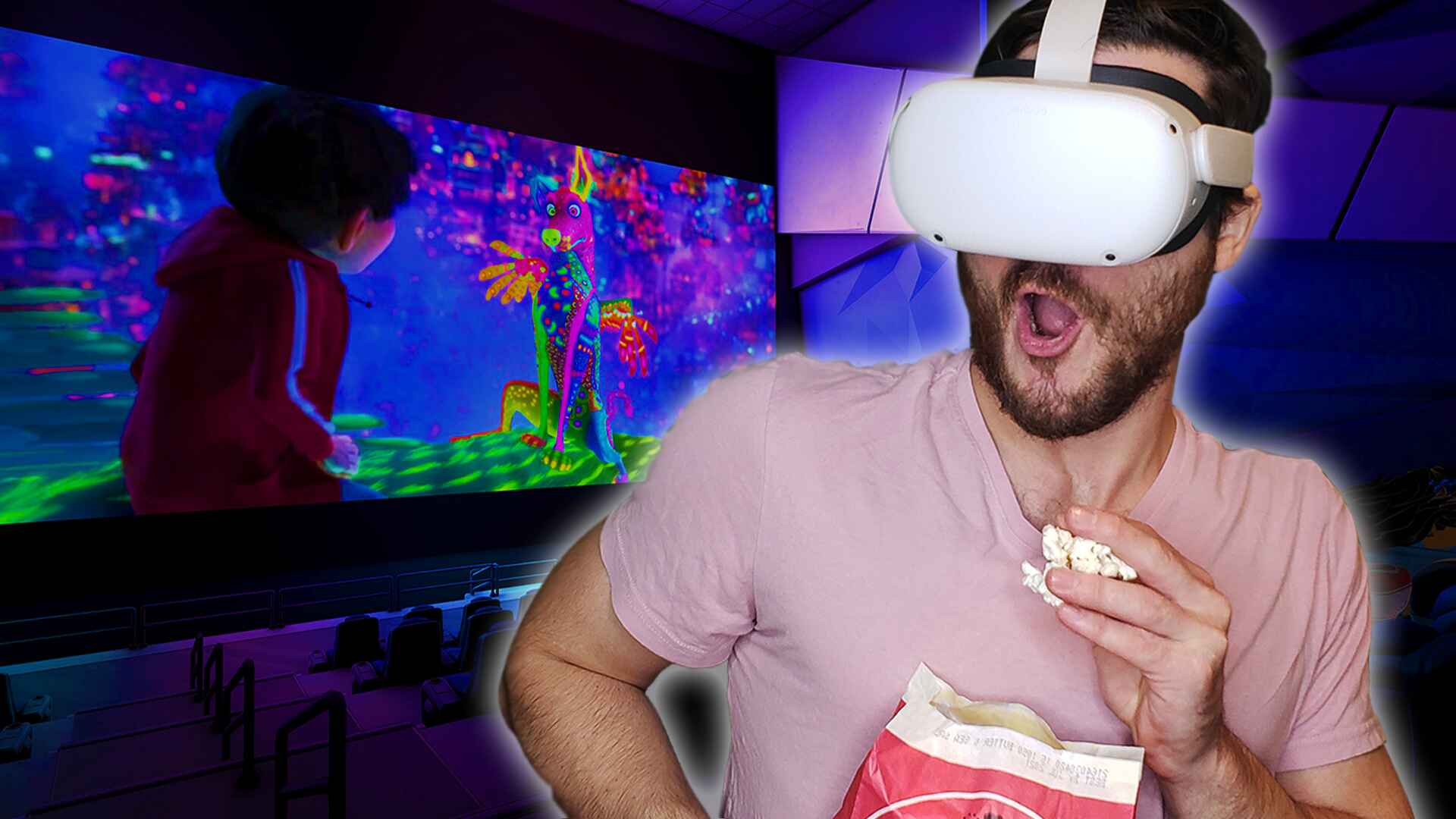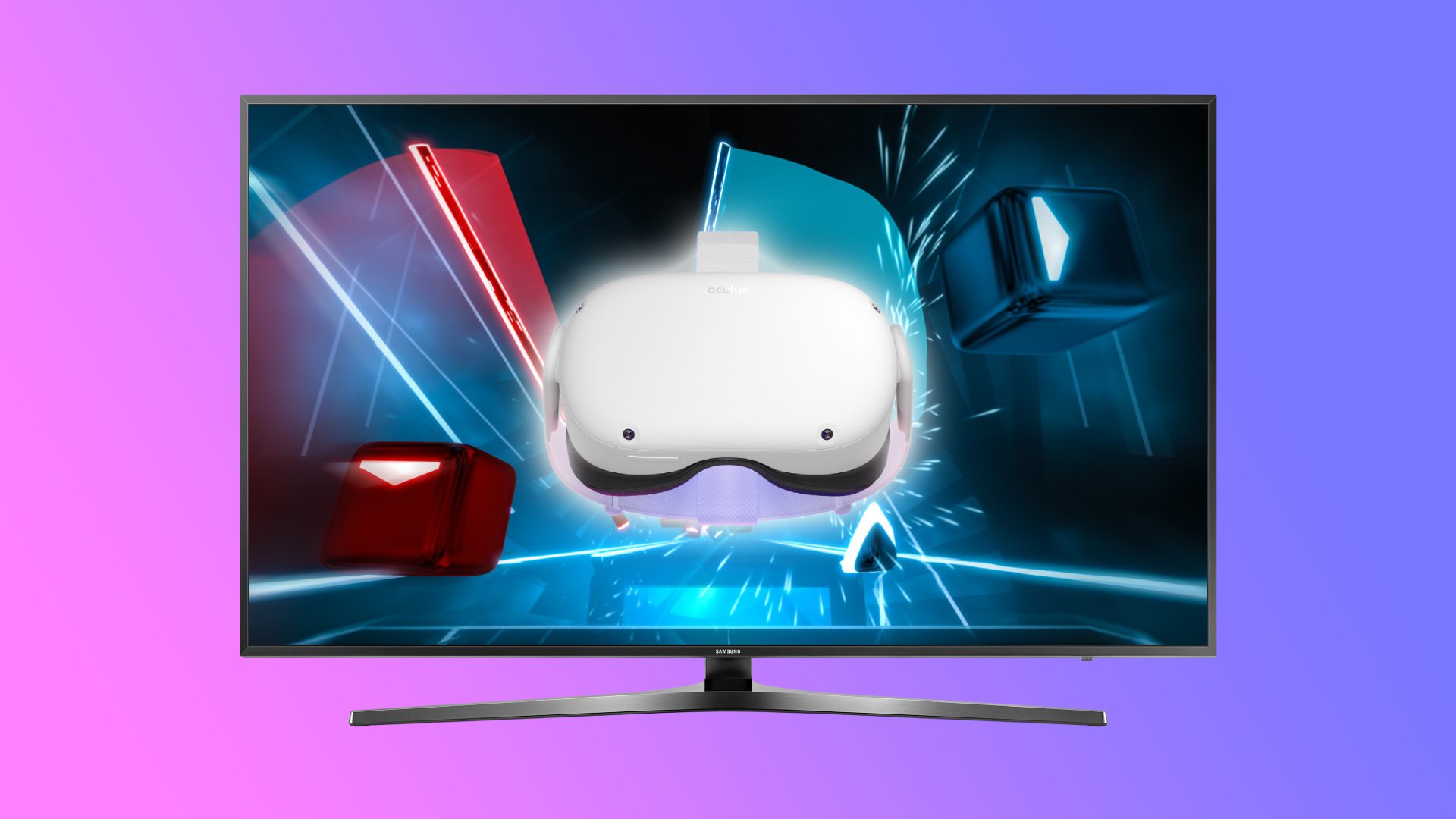Introduction
Welcome to the world of immersive virtual reality gaming with the Oculus Quest 2. This cutting-edge device allows you to step into a virtual world like never before, experiencing games and applications with unrivaled depth and realism. But what if you want to share your virtual reality experiences with others? Thanks to the power of Chromecast, you can now cast your Oculus Quest 2 to a TV screen and bring the virtual world to life for everyone to enjoy.
The Oculus Quest 2 is a standalone virtual reality headset developed by Oculus, a subsidiary of Facebook. It offers a fully immersive gaming experience without the need for a gaming console or a PC. With its powerful Snapdragon XR2 processor and high-resolution display, the Oculus Quest 2 delivers stunning visuals and smooth performance.
On the other hand, Chromecast is a media streaming device developed by Google. By connecting it to your TV’s HDMI port, you can stream or cast content from various devices, including smartphones, tablets, and now, the Oculus Quest 2. Casting your Oculus Quest 2 to a TV allows you to share your virtual reality experiences with friends and family, creating a more social and interactive experience.
Now, you might be wondering, why should you bother casting your Oculus Quest 2 to a TV? Well, there are several benefits to consider. Firstly, it allows you to share your virtual reality experiences with others, immersing them in the same world you are experiencing. This can be great for parties or gatherings, where everyone can take turns exploring different virtual environments.
In addition, casting to a TV screen provides a more comfortable viewing experience for spectators. Instead of huddling around a small headset screen, everyone can sit back and enjoy the action on a larger screen. This is especially beneficial for those who might experience motion sickness or discomfort when wearing a VR headset.
Furthermore, casting your Oculus Quest 2 to a TV opens up possibilities for multiplayer experiences. By connecting multiple Oculus Quest 2 headsets and casting them to a TV, you can engage in cooperative or competitive gaming sessions with friends or family members. It enhances the social aspect of virtual reality gaming and creates a shared experience for everyone involved.
Now that you understand the benefits of casting Oculus Quest 2 to a TV, let’s dive into the requirements and step-by-step guide for setting up Chromecast with your Oculus Quest 2.
What is Oculus Quest 2?
The Oculus Quest 2 is a revolutionary virtual reality headset that has taken the gaming world by storm. Developed by Oculus, a subsidiary of Facebook, the Quest 2 offers an unparalleled VR gaming experience without the need for a gaming console or a PC. It is a standalone device that combines the headset and the processing power into one convenient package.
Featuring an impressive Snapdragon XR2 processor and a high-resolution display, the Oculus Quest 2 delivers stunning visuals, smooth performance, and immersive gameplay. With its 90Hz refresh rate and advanced tracking sensors, it offers a seamless and responsive experience, making you feel like you are truly transported into the virtual world.
One of the standout features of the Oculus Quest 2 is its untethered nature. Unlike other VR headsets that require being connected to a powerful computer or gaming console, the Quest 2 is completely wireless. This freedom of movement allows you to explore virtual environments without any restrictions, truly enhancing the sense of immersion.
The Quest 2 comes with two integrated Oculus Touch controllers that provide intuitive and precise control over your virtual experiences. These controllers are designed to replicate your hand movements and gestures in the virtual world, providing a natural and immersive interaction with objects and environments.
With the Oculus Quest 2, you have access to a vast library of games and applications through the Oculus Store. Whether you are into action-packed shooters, immersive role-playing games, or mind-bending puzzle games, there is something for everyone. The Quest 2 also supports cross-platform multiplayer, allowing you to connect and play with friends who may own different VR devices.
In addition to gaming, the Oculus Quest 2 offers a range of other experiences. You can explore virtual environments, attend live events, watch 360-degree videos, and even engage in fitness activities with dedicated VR fitness apps. The possibilities are endless, and the Quest 2 opens up a whole new world of entertainment.
To enhance the Oculus Quest 2 experience, you can also customize the fit and comfort with the adjustable head strap and replaceable facial interface. This ensures a snug and comfortable fit, even during extended gaming sessions.
Overall, the Oculus Quest 2 represents the future of virtual reality gaming. With its impressive performance, extensive library of games, and wireless freedom, it offers an unparalleled level of immersion and entertainment. So, grab your Quest 2, put on the headset, and prepare to be transported to new worlds of virtual reality gaming.
What is Chromecast?
Chromecast is a media streaming device developed by Google that allows you to stream or cast content from various devices to your TV. It is a small dongle that connects to your TV’s HDMI port, turning it into a smart TV capable of receiving content from your smartphone, tablet, or computer.
With Chromecast, you can effortlessly stream your favorite movies, TV shows, music, and even games directly to your TV screen. It eliminates the need for cables and complicated setups, providing a seamless and convenient streaming experience.
The setup process for Chromecast is quick and straightforward. Simply plug the device into your TV’s HDMI port, connect it to your home Wi-Fi network, and you’re ready to start streaming. The intuitive interface allows you to easily navigate through different apps and content options using your smartphone as a remote control.
Chromecast works with a wide range of apps that support casting, including popular streaming services like Netflix, Hulu, YouTube, and Spotify. You can start playing a video or music on your phone and cast it to the TV with just a tap, allowing you to enjoy your favorite content on a larger screen.
In addition to media streaming, Chromecast can also be used for mirroring your device’s screen onto the TV. This is especially useful for presentations, slideshows, or sharing photos and videos with friends and family. It provides a convenient way to showcase content from your device without having to pass it around or rely on a small screen.
One of the biggest advantages of Chromecast is its compatibility with various devices and platforms. Whether you have an Android smartphone, an iPhone, or a Windows or Mac computer, you can easily cast content to your TV using the Chromecast device. It supports both Android and iOS devices, making it accessible to a wide range of users.
Chromecast also offers some advanced features, such as multi-room audio syncing. If you have multiple Chromecast devices connected to different TVs or speakers in your home, you can create a synchronized audio experience by grouping them together. This allows you to play music in multiple rooms simultaneously, filling your home with rich and immersive sound.
Overall, Chromecast is a versatile and user-friendly media streaming device that enhances your TV viewing experience. Whether you want to enjoy your favorite movies and shows or share content with others, Chromecast provides a simple and streamlined solution. So, grab your Chromecast, connect it to your TV, and start casting your favorite content for an enhanced entertainment experience.
Benefits of Casting Oculus Quest 2 to TV
Casting your Oculus Quest 2 to a TV offers several benefits that enhance your virtual reality gaming experience and provide a more social and immersive environment for everyone involved.
1. Share the Experience: By casting your Oculus Quest 2 to a TV, you can share your virtual reality experiences with friends, family, or even a larger audience. Instead of being the only one immersed in the virtual world, everyone can now see what you see and experience the thrill of virtual reality gaming together.
2. Comfortable Viewing: Virtual reality headsets like the Oculus Quest 2 provide an incredible, immersive experience, but they can be tiring to wear for long periods. Casting to a TV allows spectators to comfortably watch the action on a larger screen, eliminating the need for everyone to wear a headset and reducing the risk of discomfort or motion sickness.
3. Multiplayer Experiences: Casting Oculus Quest 2 to a TV is especially beneficial for multiplayer gaming. By connecting multiple Oculus Quest 2 headsets and casting them to a TV, you can engage in cooperative or competitive gameplay sessions with friends or family members. It enhances the social aspect of virtual reality gaming and creates a shared experience for everyone involved.
4. Enhanced Spectator Experience: With your Oculus Quest 2 casted to a TV, spectators can see a first-person view of what you’re experiencing in virtual reality. They can witness your reactions, cheer you on, and even offer advice or guidance, enhancing the overall spectator experience and making it more interactive and engaging for everyone.
5. Educational and Entertainment Purposes: Casting Oculus Quest 2 to a TV opens up opportunities beyond gaming. It can be used for educational purposes, allowing teachers or instructors to showcase virtual reality experiences in a classroom or training setting. Additionally, it can be used to watch immersive 360-degree videos, virtual tours, or attend live events, providing entertainment and enrichment to a wider audience.
6. Cinematic Viewing: Certain virtual reality experiences offer stunning cinematic visuals. By casting your Oculus Quest 2 to a TV, you can enjoy these visually immersive experiences on a larger screen, akin to watching a movie in a theater. This is particularly impactful for virtual reality content that emphasizes storytelling and cinematic elements.
7. Accessibility: Casting to a TV allows individuals with visual impairments or disabilities to enjoy virtual reality experiences indirectly. By watching the casted content on a TV, they can still participate in the virtual world and engage with others, breaking barriers and promoting inclusion.
As you can see, casting Oculus Quest 2 to a TV provides numerous benefits, from sharing the experience with others to creating a more comfortable and interactive environment. Now, let’s explore the requirements and step-by-step guide to set up Chromecast with your Oculus Quest 2.
Requirements for Casting Oculus Quest 2 to TV
Before you can start casting your Oculus Quest 2 to a TV using Chromecast, there are a few requirements you need to fulfill. Ensuring that you meet these requirements will ensure a smooth and successful casting experience.
1. Oculus Quest 2: Of course, you will need the Oculus Quest 2 headset itself. The Quest 2 is a standalone virtual reality device, so you won’t need a PC or gaming console to use it. Make sure your Quest 2 is fully charged and properly set up before proceeding with the casting process.
2. Chromecast Device: You will need a Chromecast device, such as Chromecast Ultra or the latest Chromecast with Google TV. Ensure that you have the necessary Chromecast device connected to the HDMI port of your TV. Note that certain older models of Chromecast or Chromecast built-in devices may not support casting from Oculus Quest 2.
3. Wi-Fi Network: Both your Oculus Quest 2 and Chromecast device need to be connected to the same Wi-Fi network for casting to work. Make sure your Wi-Fi network is stable and has sufficient bandwidth to handle the streaming of virtual reality content to your TV without any interruptions.
4. Compatible Mobile Device: You will need a compatible Android or iOS mobile device to set up the casting process. This mobile device will act as the controller and interface for casting the Oculus Quest 2 to your TV. Ensure that your mobile device is compatible and running the latest version of the Oculus app.
5. Oculus App: Install the Oculus app on your compatible mobile device. This app allows you to manage and control your Oculus Quest 2, including the casting feature. It is available for download from the Google Play Store for Android devices and the App Store for iOS devices.
6. Updated Firmware: Ensure that your Oculus Quest 2 firmware is up to date. The casting feature may require a specific firmware version to work properly. To check for firmware updates, go to the settings menu on your Quest 2 and look for the software update option.
7. TV with HDMI Port: Of course, you will need a TV with an available HDMI port to connect the Chromecast device. Ensure that your TV is turned on and the correct HDMI input is selected when setting up the casting process.
8. Stable Internet Connection: A stable and reliable internet connection is crucial for a smooth casting experience. Make sure that your internet connection is strong and not prone to dropouts. This will ensure that your Oculus Quest 2 content is streamed seamlessly to your TV without any lag or interruptions.
By ensuring that you meet these requirements, you can proceed with confidence to set up Chromecast and cast your Oculus Quest 2 to your TV. Let’s dive into the step-by-step guide for setting up Chromecast with your Oculus Quest 2.
Step-by-Step Guide: Setting up Chromecast with Oculus Quest 2
Setting up Chromecast with your Oculus Quest 2 is a straightforward process that allows you to cast your virtual reality experiences to a TV screen. Follow these step-by-step instructions to get started:
Step 1: Set up Chromecast
- Connect your Chromecast device to the HDMI port of your TV.
- Power on your Chromecast device by plugging it into a power outlet.
- Ensure that your Chromecast and TV are on the same Wi-Fi network.
Step 2: Download and Set Up the Oculus App
- On your compatible mobile device, download and install the Oculus app from the Google Play Store (for Android) or the App Store (for iOS).
- Open the Oculus app and sign in with your Oculus account credentials.
- Follow the on-screen prompts to set up and pair your Oculus Quest 2 headset with the app.
Step 3: Launch the Oculus App
- Once your Oculus Quest 2 is connected to the Oculus app on your mobile device, ensure that your headset is turned on and properly fitted.
- Launch the Oculus app on your mobile device.
- In the app, tap on the “Cast” icon located at the top right corner of the screen.
Step 4: Select the Chromecast Device
- The Oculus app will search for available Chromecast devices on your network.
- From the list of detected devices, select the Chromecast device that is connected to your TV.
Step 5: Start Casting
- After selecting the Chromecast device, the casting process will begin.
- Put on your Oculus Quest 2 headset and start the desired virtual reality experience or game.
- The content will start streaming on your TV screen, mirroring what you see in your Oculus Quest 2 headset.
Step 6: Enjoy the Virtual Reality Experience
- Once the casting is successfully set up, you and others can enjoy the virtual reality experience on the TV screen.
- Spectators can see what you see and engage with you, creating a more immersive and interactive environment.
- To end the casting, simply tap the “Stop Casting” button in the Oculus app.
With these simple steps, you can now enjoy casting your Oculus Quest 2 to your TV, sharing the virtual reality experience with others and creating a more social and engaging atmosphere.
Troubleshooting Common Issues
While casting your Oculus Quest 2 to a TV can be a seamless experience, you may encounter some common issues along the way. Here are some troubleshooting tips to help you resolve these issues:
1. Connectivity Issues: If you’re having trouble connecting your Oculus Quest 2 to your Chromecast device, make sure that both devices are connected to the same Wi-Fi network. Additionally, check that your internet connection is stable and strong enough to support the streaming of virtual reality content.
2. Chromecast Not Found: If the Oculus app is unable to find your Chromecast device, ensure that your Chromecast and TV are powered on and properly connected. Try restarting both your Chromecast device and your mobile device running the Oculus app. It also helps to ensure that both devices are on the same subnet of your Wi-Fi network.
3. Audio Issues: If you’re experiencing audio problems when casting the Oculus Quest 2 to your TV, check that the volume on your TV is turned up and not muted. You can also try restarting your Chromecast device and adjusting the audio settings on your TV to ensure they are properly configured.
4. Video Quality Issues: If you notice a degradation in video quality or lag when casting, it could be due to a weak Wi-Fi signal. Try moving your Chromecast device and router closer together or using a Wi-Fi extender to improve the signal strength. Additionally, make sure that your internet connection has sufficient bandwidth to support the streaming of virtual reality content.
5. Firmware and App Updates: Ensure that both your Oculus Quest 2 headset and Chromecast device have the latest firmware and app updates installed. Keeping your devices up to date can resolve compatibility and performance issues that may arise during the casting process.
6. App-Specific Issues: If you’re encountering issues while casting specific VR apps, it’s possible that the app may not support casting or may have compatibility issues with certain devices. Check the developer’s documentation or support channels for any known issues or troubleshooting steps specific to the app you’re trying to cast.
7. Restarting Devices: If you are still experiencing issues, try restarting both your Oculus Quest 2 headset and your Chromecast device. Sometimes a simple restart can resolve minor glitches or connectivity issues.
If you continue to encounter problems while casting your Oculus Quest 2 to a TV, it may be helpful to consult the support documentation provided by Oculus or Google for further assistance. They can provide specific troubleshooting steps tailored to your devices and setup.
By following these troubleshooting tips, you can overcome common issues and ensure a smooth casting experience, allowing you to fully enjoy immersive virtual reality gaming on your TV screen.
Tips and Recommendations for an Optimal Casting Experience
To ensure the best possible casting experience when using your Oculus Quest 2 with Chromecast, consider the following tips and recommendations:
1. Wi-Fi Network Stability: A stable Wi-Fi network is crucial for a smooth casting experience. If possible, connect both your Oculus Quest 2 and Chromecast device to a dedicated 5GHz Wi-Fi network, as it tends to provide better performance and reduced interference compared to the 2.4GHz band.
2. Internet Bandwidth: Ensure that you have sufficient internet bandwidth to support the streaming of virtual reality content. Bandwidth requirements can vary depending on the resolution and frame rate of the content you’re casting. If you experience buffering or lag, consider upgrading your internet plan or reducing the quality settings of the casting in the Oculus app.
3. Optimal Placement of Chromecast Device: Position the Chromecast device as close to your Wi-Fi router as possible to ensure a strong and stable Wi-Fi signal. Additionally, make sure that there are no obstructions or interference from other devices that could impact the wireless connection.
4. Reduce Wireless Interference: Other wireless devices in your environment, such as cordless phones, microwave ovens, or other Wi-Fi devices, can interfere with the signal strength and quality. Minimize the use of such devices when casting your Oculus Quest 2 for an optimal experience.
5. Adjust TV Settings: To enhance the picture quality when casting, adjust the settings on your TV. Use the appropriate picture mode (such as Game Mode or Cinema Mode) to optimize the visual experience. Adjust the brightness, contrast, and color settings to your preference for a more vibrant and immersive viewing experience.
6. Clear Play Area: Ensure that there is ample space around you while casting. Clear any obstacles or objects that may obstruct your movements while playing, ensuring a safe and enjoyable experience for both the player and spectators.
7. Spectator Comfort: If you have multiple spectators watching the casted content, consider providing seating arrangements or ensuring there is enough room for everyone to comfortably view the TV screen. Provide additional cushions or seating options if necessary to enhance the overall comfort of the spectators.
8. Experiment with Different Virtual Reality Content: Explore various virtual reality games, apps, and experiences to find the ones that work best for casting. Certain games or experiences may offer a more visually engaging and captivating spectacle on the TV screen, enhancing the enjoyment for everyone watching.
9. Have Fun and Share the Experience: Remember that casting your Oculus Quest 2 to a TV is about creating a shared experience and bringing people together. Encourage interaction and engagement between the player and spectators, fostering a fun and immersive environment for everyone involved.
By following these tips and recommendations, you can optimize your casting experience and enjoy the full potential of sharing your Oculus Quest 2 virtual reality adventures with others on a TV screen.
Conclusion
Casting your Oculus Quest 2 to a TV with Chromecast opens up a new world of possibilities for sharing and enjoying virtual reality experiences. By following the step-by-step guide, you can easily set up the casting process and immerse yourself and others in the virtual world on a larger screen.
We explored the benefits of casting Oculus Quest 2 to a TV, including the ability to share the experience with others, create a comfortable viewing environment, and engage in multiplayer gaming sessions. We also discussed the requirements for casting, such as having both the Oculus Quest 2 headset and Chromecast device, a stable Wi-Fi network, and compatible mobile devices.
Furthermore, we provided troubleshooting tips to help you resolve common issues that may arise during the casting process. By addressing connectivity, audio, video, and app-specific issues, you can overcome any obstacles and enjoy a seamless casting experience.
To optimize your casting experience, we shared tips and recommendations, such as ensuring a stable Wi-Fi network, adjusting TV settings for optimal visuals, and creating a comfortable and immersive environment for both players and spectators.
Now that you have the knowledge and tools to cast your Oculus Quest 2 to a TV, it’s time to gather your friends and family, put on the headset, and embark on virtual reality adventures together. Whether you’re sharing jaw-dropping gaming moments, exploring immersive virtual environments, or simply enjoying virtual reality movies and videos, casting brings a whole new level of social interaction and engagement.
So, don’t hesitate – set up your Chromecast, follow the guide, and let the casting begin. It’s time to share the wonder and excitement of virtual reality with those around you, creating memories and experiences that will last a lifetime.







